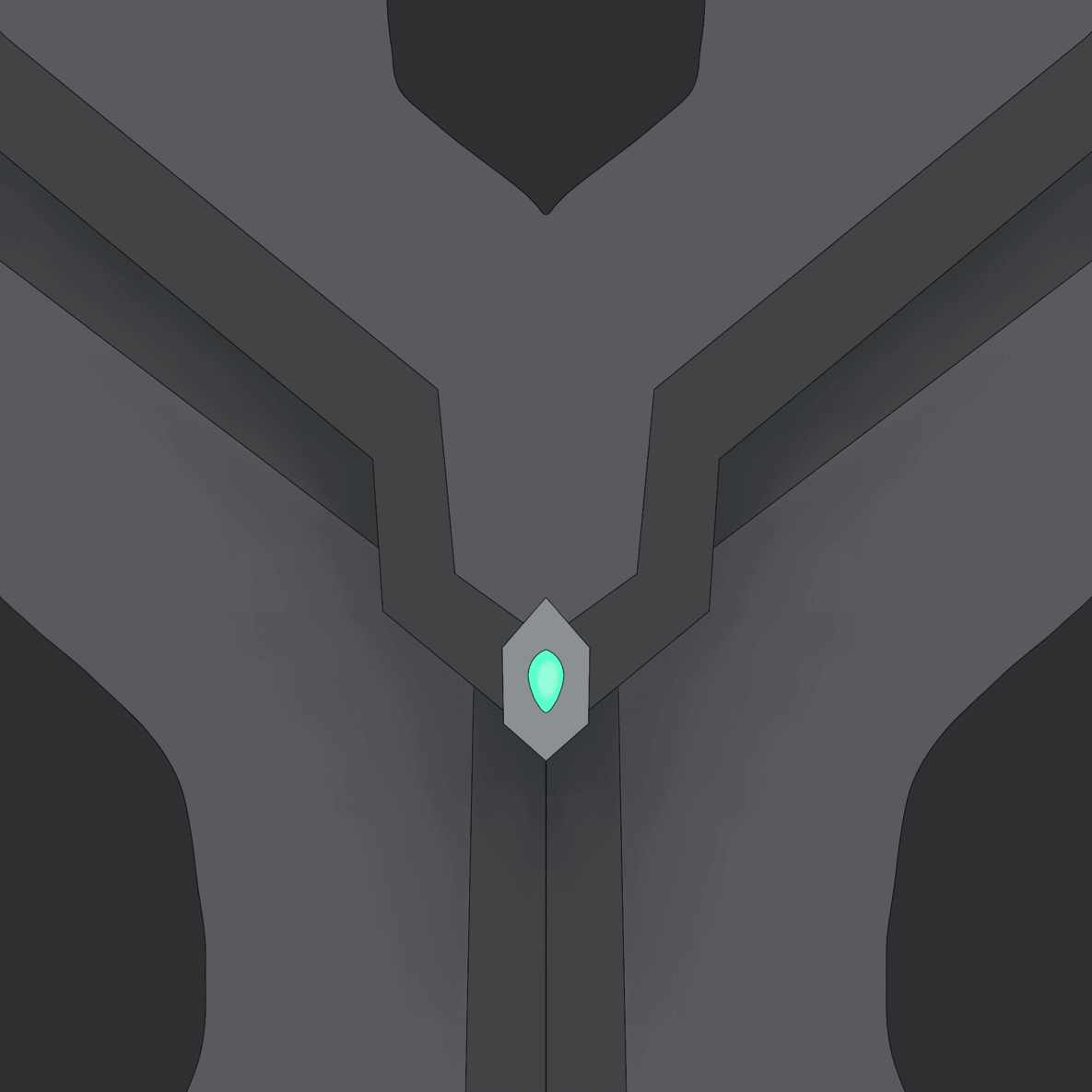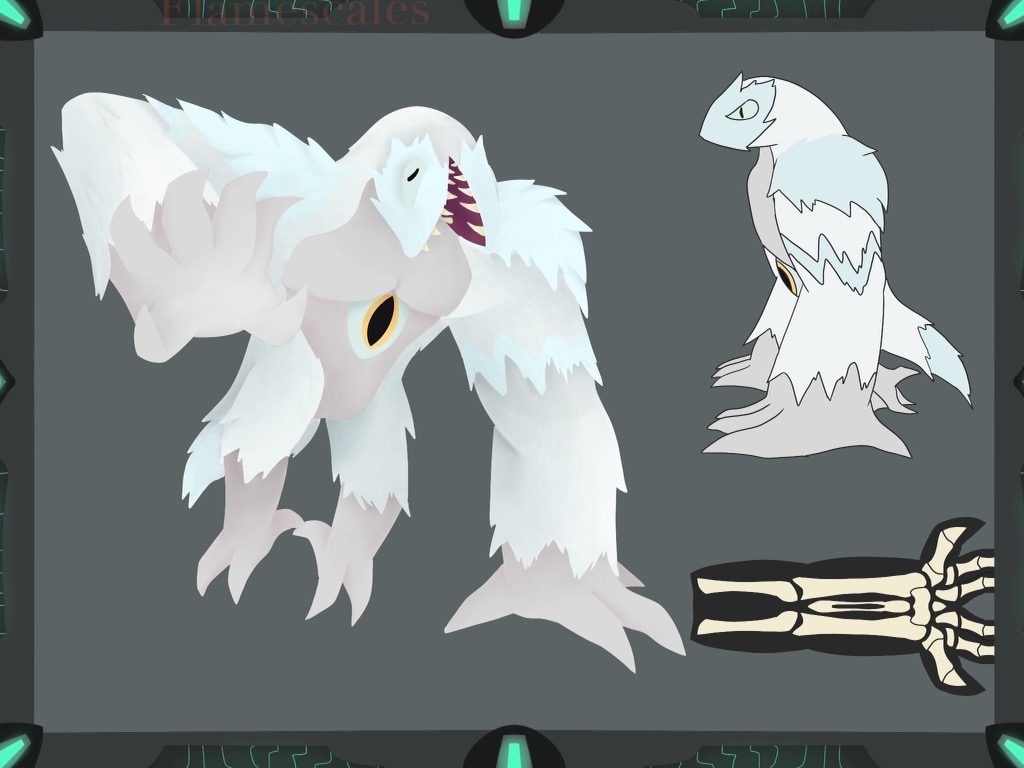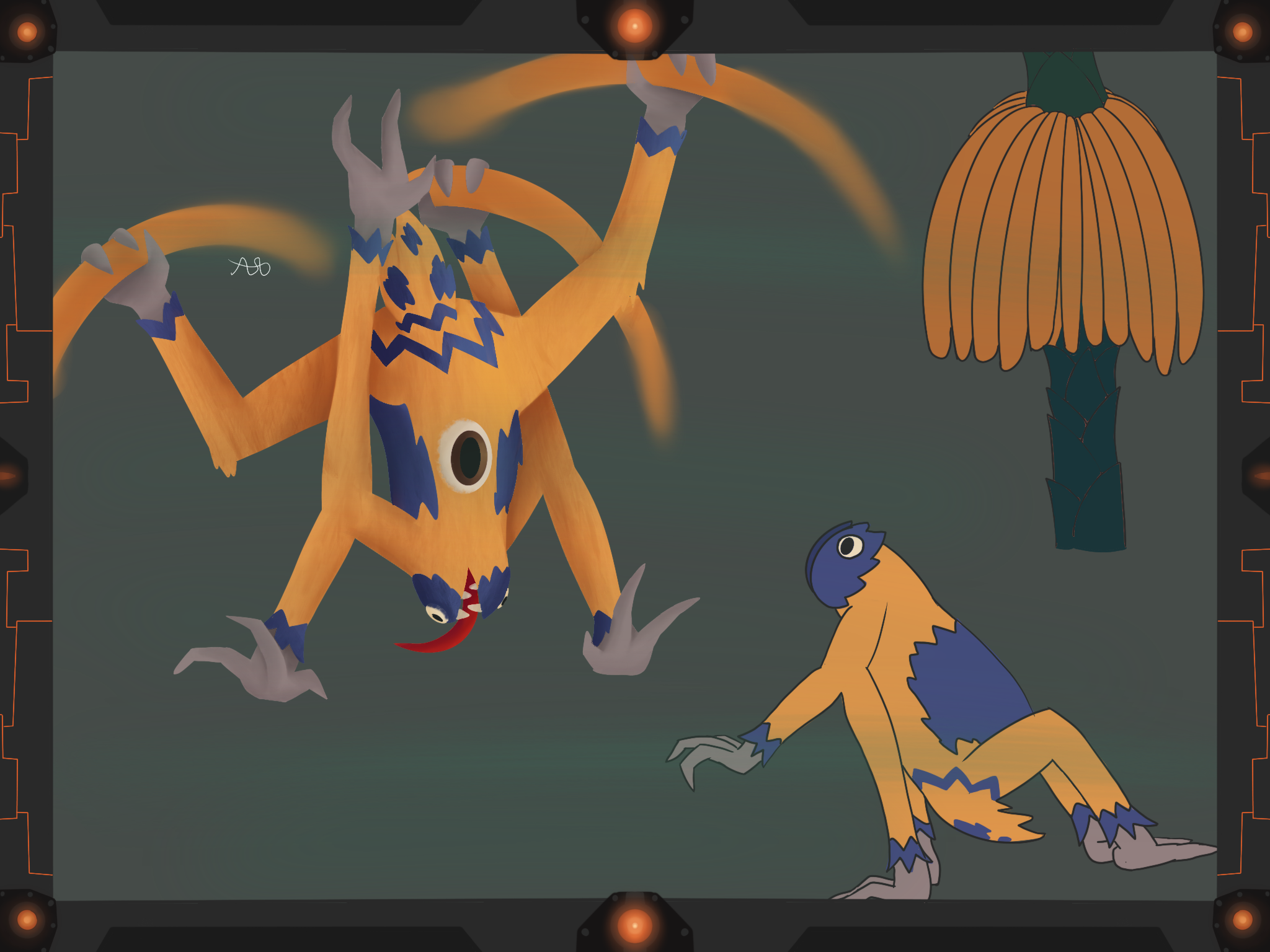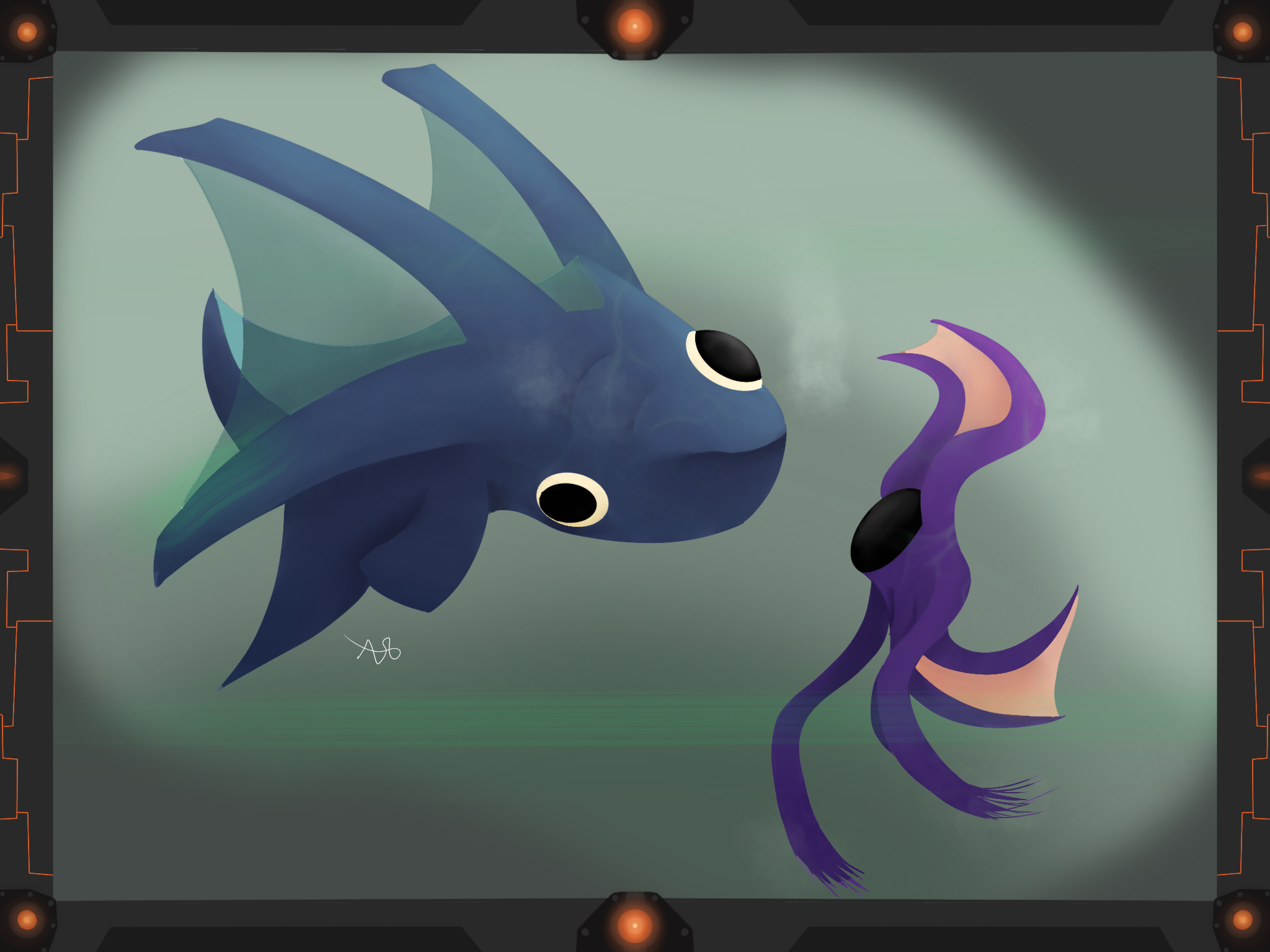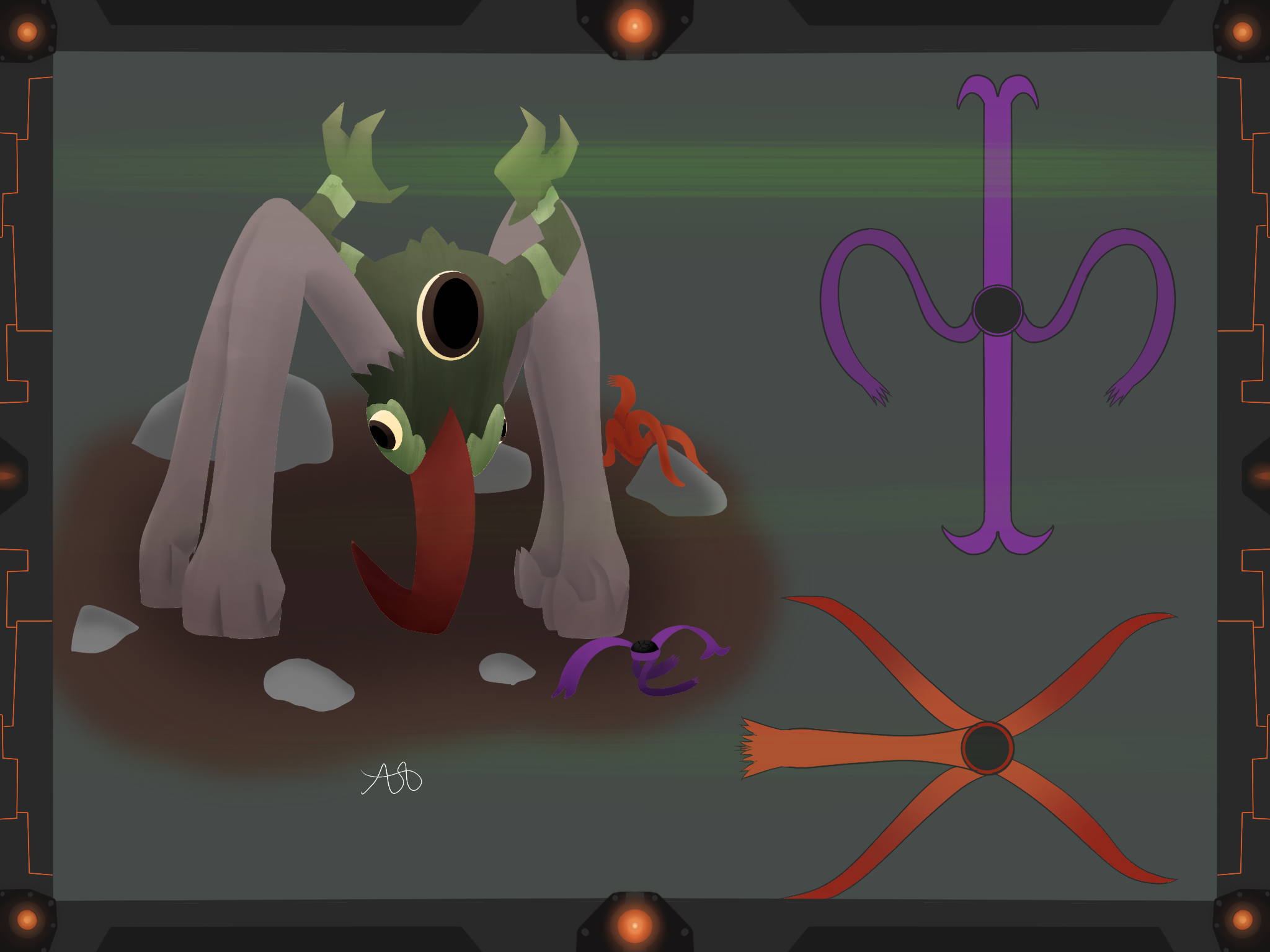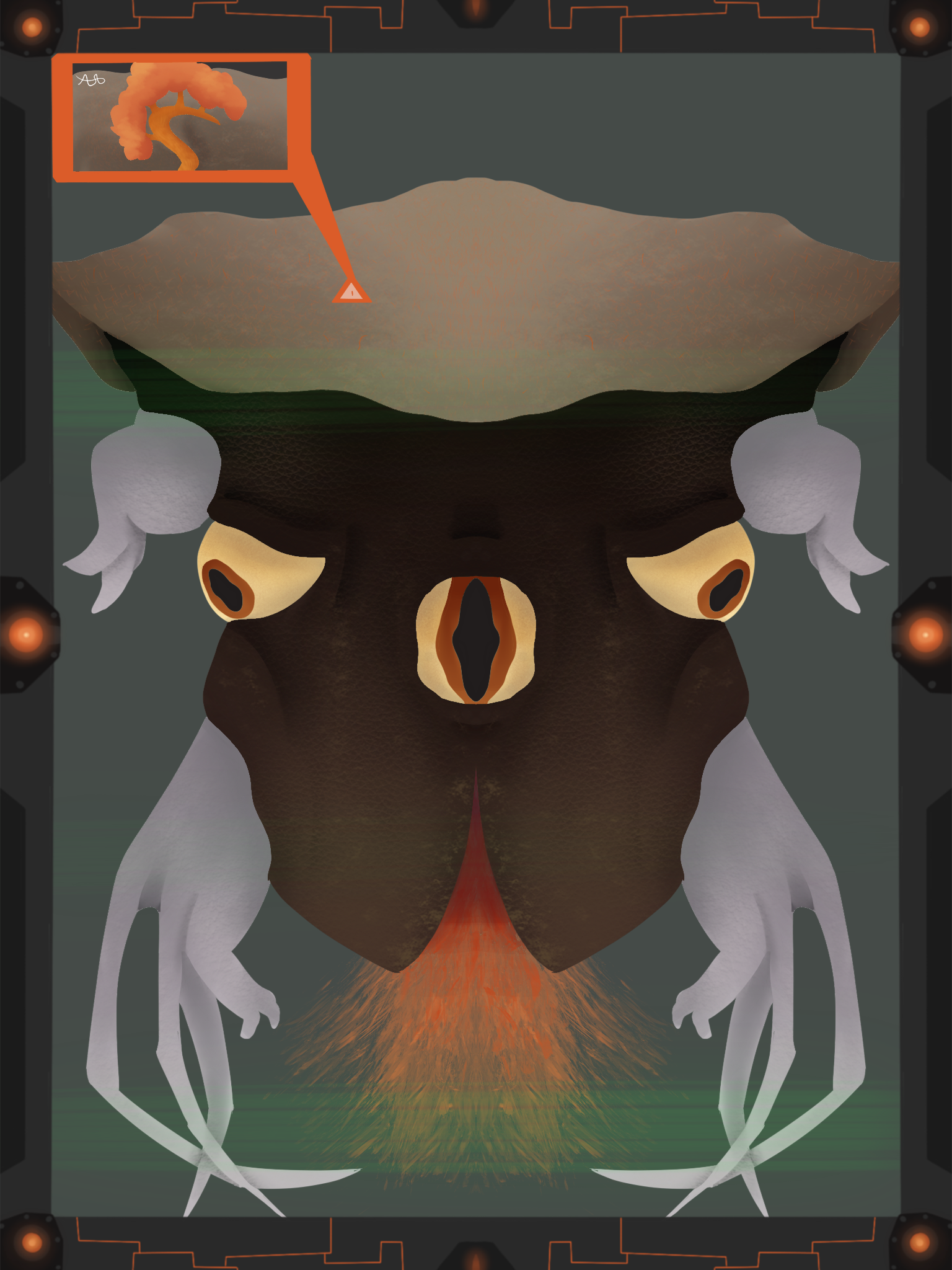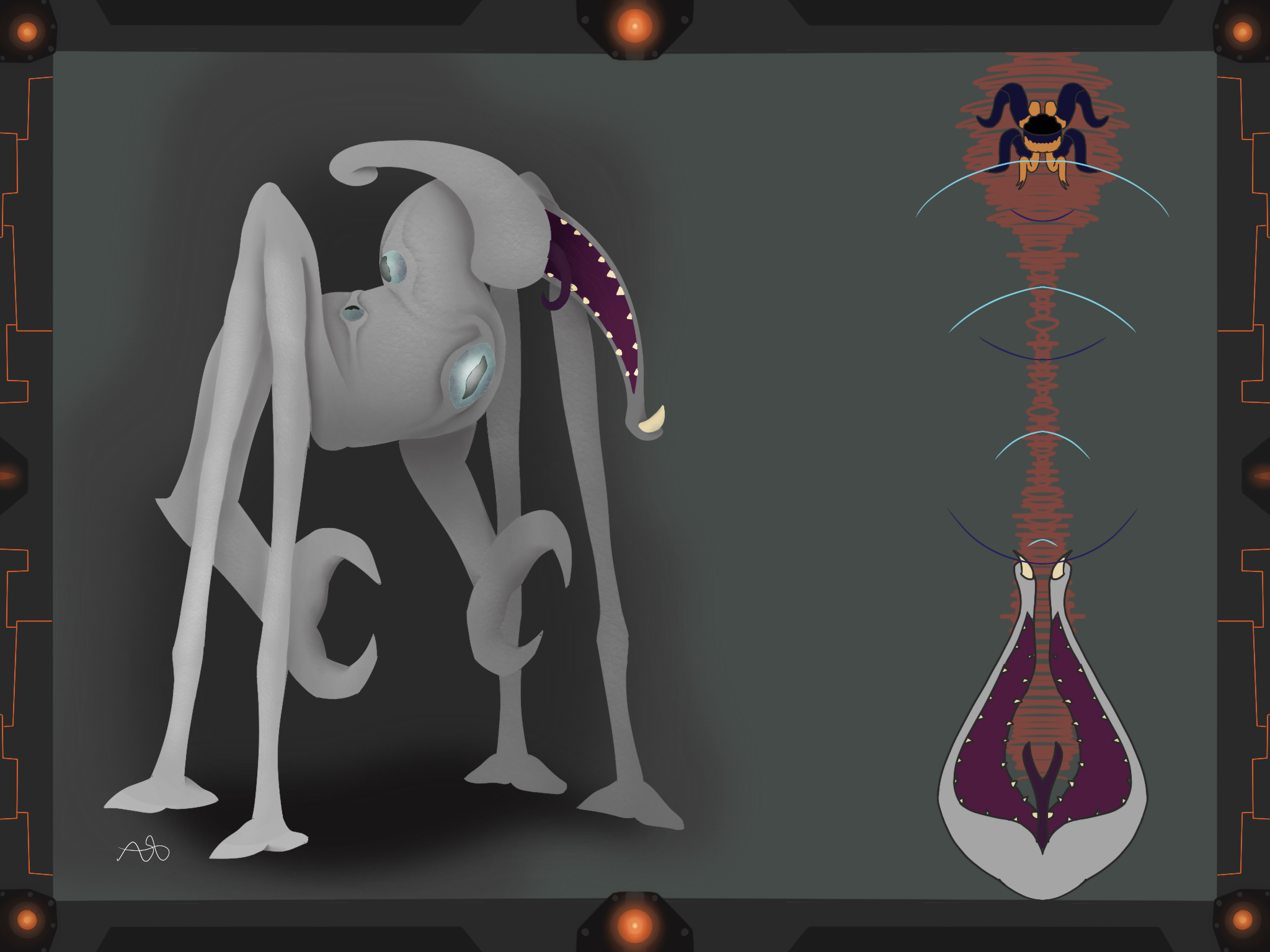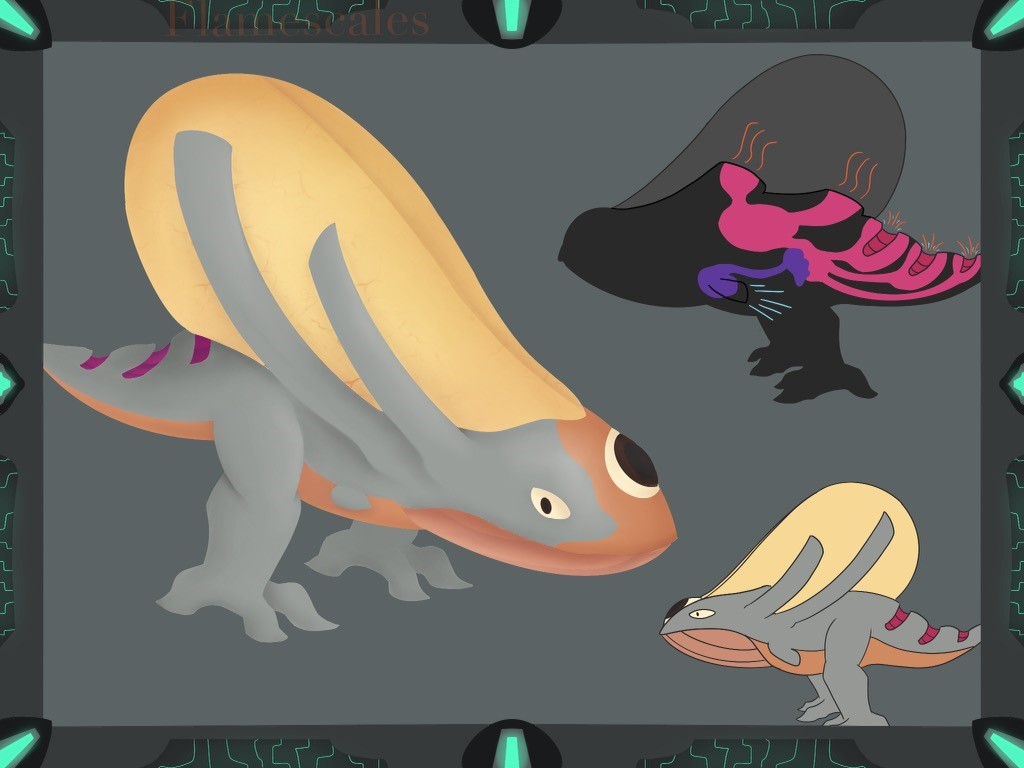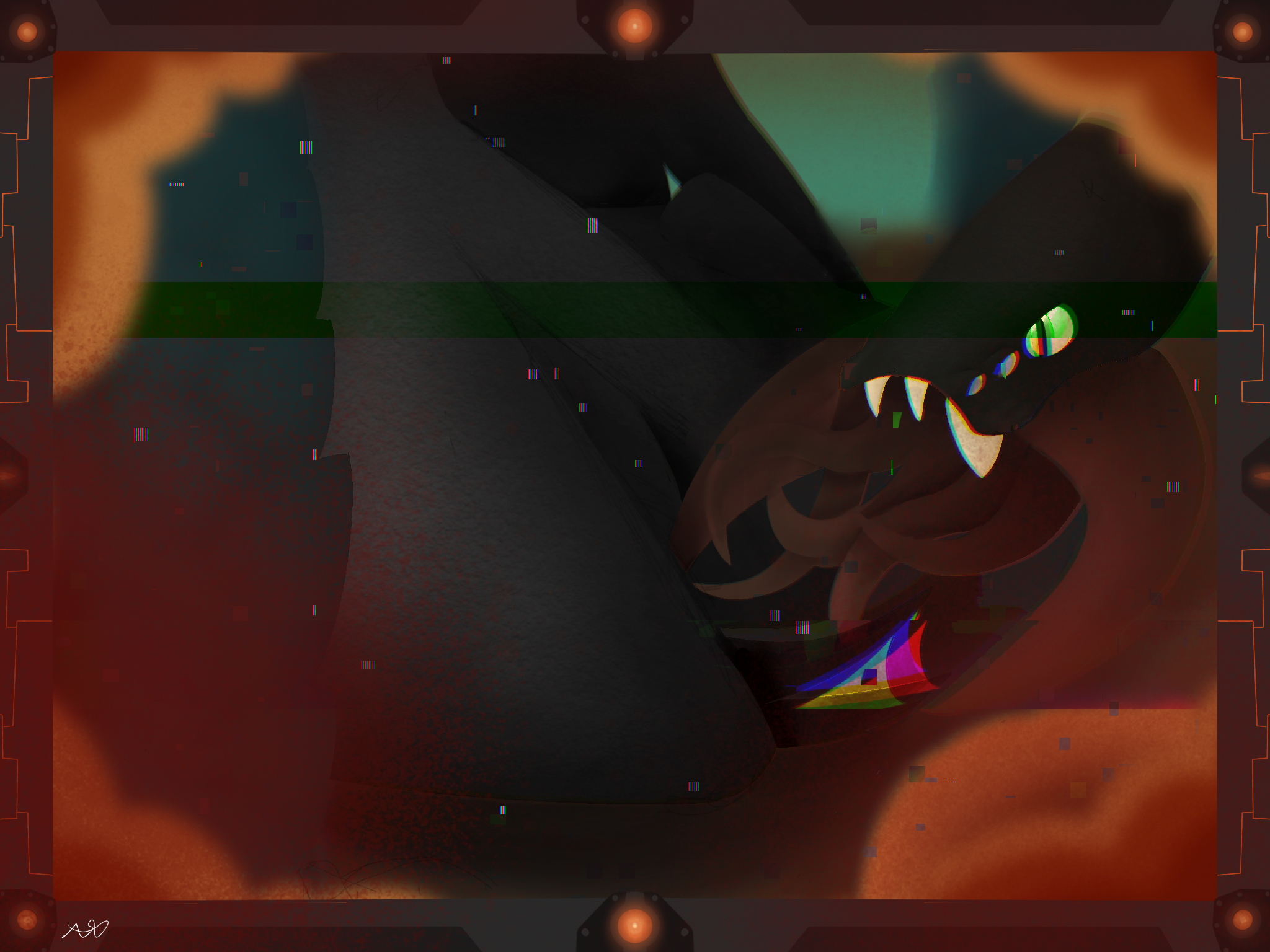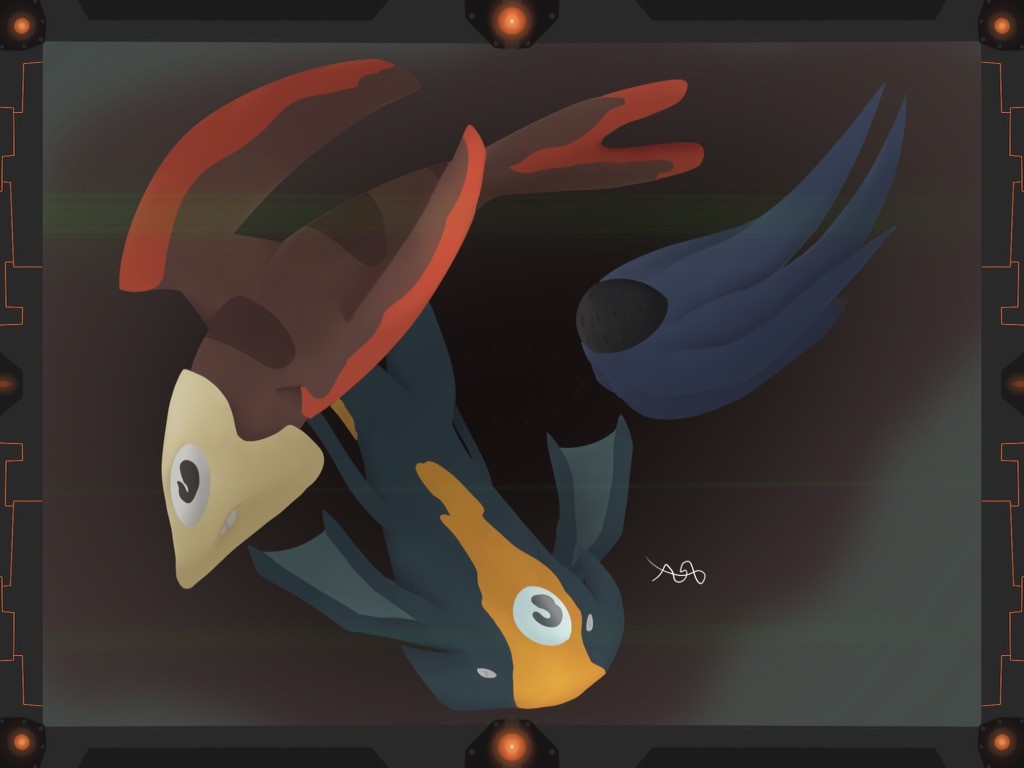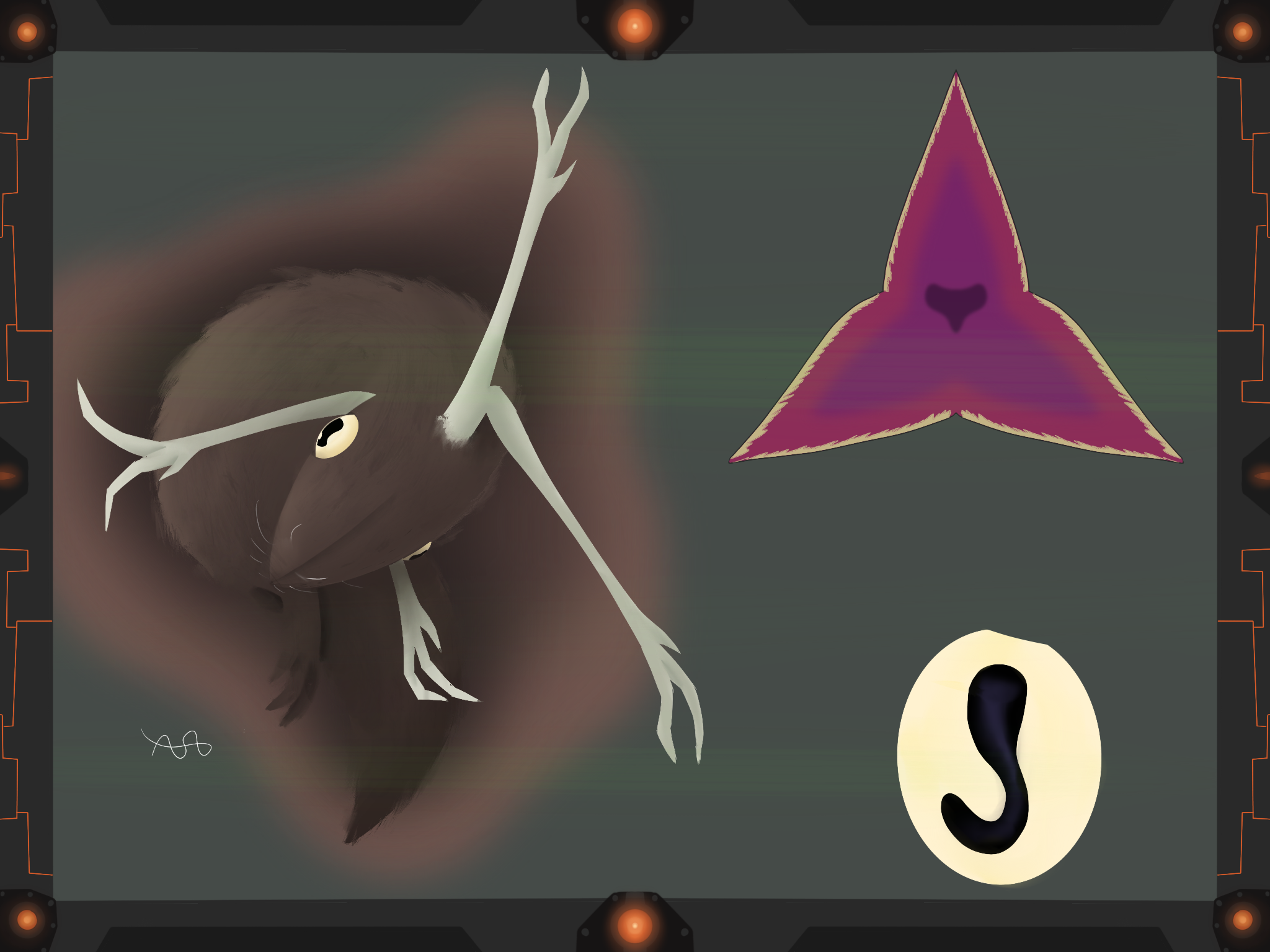-
15 Posts
-
17 Photos
-
0 Videos
-
Followed by 0 people
Recent Updates
-
Tullie: Your next mission is in. You will be going back to Murkosia to explore its northern pole.
Farquid: That’s good to hear. It’s nice to not go from one planet to an entirely different one.
Tullie: Your gear will be changed to be best suited for this new environment. Oh, about your request for a scout drone.
Farquid: Oh, good, you saw that. I don’t want anything fancy, just something to alert me if a creature is about to attack.
Tullie: We realize that your job is quite dangerous. So, for your protection, you have been assigned a Death Bot.
Farquid: A DEATH BOT!!
Tullie: Yes, a Death Bot. It will be activated before you start your nest mission and….
Farquid: wait, wait, wait. Why in the universe would I need a Death bot? I document creatures for a living why am I getting assigned a WAR MACHINE! Three of those things can level a mountain. Why do I need that kind of firepower?
Tullie: For your safety of course. When your father visited and saw that you were attac….
Farquid: Oh, there it is, my father. That man has never once cared about my work, and I do NOT want his input on my safety. I want you to take that droid right back to him.
Tullie: But Farquid, he’s your father we can’t just walk up to him and say no.
Farquid: He’s the head of war not a dictator, just go up and tell him to take back his war machine.
Tullie: We can’t do that. He put in the request and his word is finale!
Farquid: Then destroy the thing. He has thousands of Death Bots I’m sure that he could care less if one is broken.
Tullie. Actually, this one is custom made. Its AI is more advanced, and it has a voice box.
Farquid: *sigh* Of course its custom made. Fine! I’ll do this mission. But do not think for a second that I see this “gift” as sign that my father cares about me. You gave a researcher a war machine, understand?
Tullie: Understood.
Tullie: Your next mission is in. You will be going back to Murkosia to explore its northern pole. Farquid: That’s good to hear. It’s nice to not go from one planet to an entirely different one. Tullie: Your gear will be changed to be best suited for this new environment. Oh, about your request for a scout drone. Farquid: Oh, good, you saw that. I don’t want anything fancy, just something to alert me if a creature is about to attack. Tullie: We realize that your job is quite dangerous. So, for your protection, you have been assigned a Death Bot. Farquid: A DEATH BOT!! Tullie: Yes, a Death Bot. It will be activated before you start your nest mission and…. Farquid: wait, wait, wait. Why in the universe would I need a Death bot? I document creatures for a living why am I getting assigned a WAR MACHINE! Three of those things can level a mountain. Why do I need that kind of firepower? Tullie: For your safety of course. When your father visited and saw that you were attac…. Farquid: Oh, there it is, my father. That man has never once cared about my work, and I do NOT want his input on my safety. I want you to take that droid right back to him. Tullie: But Farquid, he’s your father we can’t just walk up to him and say no. Farquid: He’s the head of war not a dictator, just go up and tell him to take back his war machine. Tullie: We can’t do that. He put in the request and his word is finale! Farquid: Then destroy the thing. He has thousands of Death Bots I’m sure that he could care less if one is broken. Tullie. Actually, this one is custom made. Its AI is more advanced, and it has a voice box. Farquid: *sigh* Of course its custom made. Fine! I’ll do this mission. But do not think for a second that I see this “gift” as sign that my father cares about me. You gave a researcher a war machine, understand? Tullie: Understood.0 Comments 0 Shares 31 ViewsPlease log in to like, share and comment! -
Log 2, snow snatchers. moving further into the poles I came across a remarkable beast. I heard a roar in the distance followed by the thunderous stomps of the beast. The droid prepared to obliterate the forest while I barked at it to stop. Then, out from the trees the creature emerged, it had four limbs, an eye on its chest, and massive arms that it walked on. Luckily the beast paid no mind to us and instead snatched up a smaller piece of prey. I was able to get a scan on the creature and found out some very interesting details. The first is that the creature is the frostbitten cousin of the tree snatchers from my previous expedition. For that reason, I will call these beast Snow Snatchers. The next thing of note is that the snow snatchers have only four limbs instead of the usual six. By looking at the skeletal structure I can see that the four limbs have fused together into one large arm. These massive arms not only provide the snow snatchers with locomotion, but they make it a formidable predator. Snow snatchers also exhibit a strange behavior; they will baith themselves in mud puddles to clean their fur, but they always do a thorough check before stepping into a pool of mud, and if something is wrong with the mud, they bolt off in the opposite direction. Further study will be needed to comprehend this odd behavior.
Log 2, snow snatchers. moving further into the poles I came across a remarkable beast. I heard a roar in the distance followed by the thunderous stomps of the beast. The droid prepared to obliterate the forest while I barked at it to stop. Then, out from the trees the creature emerged, it had four limbs, an eye on its chest, and massive arms that it walked on. Luckily the beast paid no mind to us and instead snatched up a smaller piece of prey. I was able to get a scan on the creature and found out some very interesting details. The first is that the creature is the frostbitten cousin of the tree snatchers from my previous expedition. For that reason, I will call these beast Snow Snatchers. The next thing of note is that the snow snatchers have only four limbs instead of the usual six. By looking at the skeletal structure I can see that the four limbs have fused together into one large arm. These massive arms not only provide the snow snatchers with locomotion, but they make it a formidable predator. Snow snatchers also exhibit a strange behavior; they will baith themselves in mud puddles to clean their fur, but they always do a thorough check before stepping into a pool of mud, and if something is wrong with the mud, they bolt off in the opposite direction. Further study will be needed to comprehend this odd behavior.0 Comments 0 Shares 58 Views -
Log 2, trees. I have encountered my first predatory creature which, fortunately, only stands at about 5ft. Like the shroom heads the creature also poses three eyes, although the third eye on this creature can see in full color. The hunting methods of this creature consist of it hanging in the trees ready to snatch up any unsuspecting prey that walks beneath it. I will name these creature tree snatchers. Speaking about trees, the ones on Murkosia take on a strange form. The bark grows in almost thick petals that have a sort of plastic feel. The leaves are very interesting, they grow in long tubes that photosynthesize at an astounding rate, and since this planet doesn’t have any form of grass theses leaves trap in a lot of heat, making them hot to the touch … which I found out the hard way. One last thing of note, the plant that the shroom heads ate looks nothing like any other plant I’ve seen so far. Perhaps I just need to get a higher view.Log 2, trees. I have encountered my first predatory creature which, fortunately, only stands at about 5ft. Like the shroom heads the creature also poses three eyes, although the third eye on this creature can see in full color. The hunting methods of this creature consist of it hanging in the trees ready to snatch up any unsuspecting prey that walks beneath it. I will name these creature tree snatchers. Speaking about trees, the ones on Murkosia take on a strange form. The bark grows in almost thick petals that have a sort of plastic feel. The leaves are very interesting, they grow in long tubes that photosynthesize at an astounding rate, and since this planet doesn’t have any form of grass theses leaves trap in a lot of heat, making them hot to the touch … which I found out the hard way. One last thing of note, the plant that the shroom heads ate looks nothing like any other plant I’ve seen so far. Perhaps I just need to get a higher view.0 Comments 0 Shares 20 Views
-
Log 7, the water. The planet Murkosia doesn’t have any oceans, instead the planet is littered with rivers and lakes. I decided to explore one of the seven great lakes of the planet to try and see what kind of creatures lurk beneath the water. In terms of biodiversity there wasn’t much, I mainly saw variations of two different species, those being thin fins and aquaclops. The thin fins are some of the oldest creatures on the planet and are relatively simple in structure. They poses two long appendages on each side that are connected via a thin membrane and steer using small fins on their bottom. The aquaclops are very similar to the Cydropeds with the main difference being the membrane that connects their tentacles. The water didn’t provide much in terms of creatures, but I learned something interesting about the strange plant. The roots extend far underground. so, I have a new place to check out.Log 7, the water. The planet Murkosia doesn’t have any oceans, instead the planet is littered with rivers and lakes. I decided to explore one of the seven great lakes of the planet to try and see what kind of creatures lurk beneath the water. In terms of biodiversity there wasn’t much, I mainly saw variations of two different species, those being thin fins and aquaclops. The thin fins are some of the oldest creatures on the planet and are relatively simple in structure. They poses two long appendages on each side that are connected via a thin membrane and steer using small fins on their bottom. The aquaclops are very similar to the Cydropeds with the main difference being the membrane that connects their tentacles. The water didn’t provide much in terms of creatures, but I learned something interesting about the strange plant. The roots extend far underground. so, I have a new place to check out.0 Comments 0 Shares 20 Views
-
Log 5, Ground lickers and Cydropeds. After finding no useful information in the skies I decided to take a closer look at the ground, and in doing so I managed to find some unique creatures. The first creatures I found were ground lickers. The ground lickers are the smaller, herbivorous cousins of the tree snatchers. These creatures eat by dragging their tongue on the ground and consuming any bacteria that is caught. This species seems to be the primary consumers on this planet’s food chain. The ground lickers were not the only creatures I saw after taking a closer look at the ground. The species I found will be called cydropeds. The cydropeds are a genesis of small, one eyed, tentacled creatures with a mouth that ends in hair like strands. Some use this strange mouth to filter out food in the ground while others use it to ensnare prey. The cydropeds all have similar body structures suggesting that they are a relatively new species to this world.Log 5, Ground lickers and Cydropeds. After finding no useful information in the skies I decided to take a closer look at the ground, and in doing so I managed to find some unique creatures. The first creatures I found were ground lickers. The ground lickers are the smaller, herbivorous cousins of the tree snatchers. These creatures eat by dragging their tongue on the ground and consuming any bacteria that is caught. This species seems to be the primary consumers on this planet’s food chain. The ground lickers were not the only creatures I saw after taking a closer look at the ground. The species I found will be called cydropeds. The cydropeds are a genesis of small, one eyed, tentacled creatures with a mouth that ends in hair like strands. Some use this strange mouth to filter out food in the ground while others use it to ensnare prey. The cydropeds all have similar body structures suggesting that they are a relatively new species to this world.0 Comments 0 Shares 20 Views
-
Log 10, answers. After following the shroom heads further down the cave we came to an opening, inside was a colossal creature. After a scan I was able to see the full body of this ancient species and, wouldn’t you know, they are the origin of the strange plant with it being long strands of hair, I’ll call this species terratops. The shroom heads were also showing new behavior, the big one in the middle pointed to the terratops’s eye and said something to the others, then the other shroom heads threw some liquid into its mouth. After all that the big shroom head said something while looking at me and suddenly the little ones were at my feat, all of them were curious about my being so I just showed them my arms and a flashlight and then left. It’s safe to say that the shroom heads are this planet’s intelligent species, they live in groups, tend to gigantic cattle, and are curious about their world. Now, it’s time to report back to the ship.Log 10, answers. After following the shroom heads further down the cave we came to an opening, inside was a colossal creature. After a scan I was able to see the full body of this ancient species and, wouldn’t you know, they are the origin of the strange plant with it being long strands of hair, I’ll call this species terratops. The shroom heads were also showing new behavior, the big one in the middle pointed to the terratops’s eye and said something to the others, then the other shroom heads threw some liquid into its mouth. After all that the big shroom head said something while looking at me and suddenly the little ones were at my feat, all of them were curious about my being so I just showed them my arms and a flashlight and then left. It’s safe to say that the shroom heads are this planet’s intelligent species, they live in groups, tend to gigantic cattle, and are curious about their world. Now, it’s time to report back to the ship.0 Comments 0 Shares 22 Views
-
Log 9, the caves. As I was descending the caves of this planet, I ran into multiple creatures all with strange appearances. I kept hearing a clicking though, and the deeper down I went, the more clicking I heard. I knew it must have been some creature, but I could never get a good glimpse at it, but it could “see” me perfectly. This all culminated when the source of the clicking jumped out and ate a creature I was studying, luckily, I was not hurt, the creature seemed to think I was one of its kind. I’ve decided to call these creepy creatures Cave clickers. The cave clickers are long, thin, and pale like humans, although that’s where similarity’s end. Cave clickers are blind with their eyes wrapped around their bodies in one long vein. Cave clickers see via echolocation and scent. Despite being an apex predator, Cave clickers are very social, with many individuals living in one large group near a water source. As I dive deeper into the caves plants and animals seem to be more abundant, I’ve also been seeing shroom heads down here walking in groups toward something. I’m going to follow them to see what’s really down here.Log 9, the caves. As I was descending the caves of this planet, I ran into multiple creatures all with strange appearances. I kept hearing a clicking though, and the deeper down I went, the more clicking I heard. I knew it must have been some creature, but I could never get a good glimpse at it, but it could “see” me perfectly. This all culminated when the source of the clicking jumped out and ate a creature I was studying, luckily, I was not hurt, the creature seemed to think I was one of its kind. I’ve decided to call these creepy creatures Cave clickers. The cave clickers are long, thin, and pale like humans, although that’s where similarity’s end. Cave clickers are blind with their eyes wrapped around their bodies in one long vein. Cave clickers see via echolocation and scent. Despite being an apex predator, Cave clickers are very social, with many individuals living in one large group near a water source. As I dive deeper into the caves plants and animals seem to be more abundant, I’ve also been seeing shroom heads down here walking in groups toward something. I’m going to follow them to see what’s really down here.0 Comments 0 Shares 20 Views
-
Log 3, The Thorsum. Moving further into the tundra the air gets noticeably colder. That doesn’t stop wildlife though. A species dubbed the thorsum was a common site in the colder areas of the tundra. The thorsum are large herbivorous creatures that average about 6.7ft in height. The thorsum have a unique way of keeping warm; inside the bulb on their back are two vents that produce heat by combusting methane found in the air. Biological combustion of methane is a trait of aerial species, meaning that the thorsum could once fly. The way the thorsum gets methane is unique to other species though; a set of openings on the tail are connected to three respiratory organs that intake air and pump it to a special set of organs, these organs filter out the methane from the air and send it to the combustion vents on the back while the rest of the gas is shot out of vents on the chest. This process is very effective at keeping the heat backs warm in some of the coldest areas. It also seems to protect them from whatever is in the mud. Mud pools that the thorsum enter have more bacteria in them indicating the removal of some kind of parasite. I’ll do more research on this.Log 3, The Thorsum. Moving further into the tundra the air gets noticeably colder. That doesn’t stop wildlife though. A species dubbed the thorsum was a common site in the colder areas of the tundra. The thorsum are large herbivorous creatures that average about 6.7ft in height. The thorsum have a unique way of keeping warm; inside the bulb on their back are two vents that produce heat by combusting methane found in the air. Biological combustion of methane is a trait of aerial species, meaning that the thorsum could once fly. The way the thorsum gets methane is unique to other species though; a set of openings on the tail are connected to three respiratory organs that intake air and pump it to a special set of organs, these organs filter out the methane from the air and send it to the combustion vents on the back while the rest of the gas is shot out of vents on the chest. This process is very effective at keeping the heat backs warm in some of the coldest areas. It also seems to protect them from whatever is in the mud. Mud pools that the thorsum enter have more bacteria in them indicating the removal of some kind of parasite. I’ll do more research on this.0 Comments 0 Shares 23 Views
-
Log 3, the skies. The skies of Murkosia take on a green hue due to the waters being filled with algae. Scans also show that the air is high in methane; this is a key component of the flight of nearly all avian creatures on this planet. The creatures I am documenting will be called sky shooters, and their body seems to be the model for all creatures that wish to fly. The sky shooter flies via jet propulsion, by igniting the methane in the air they can reach high speeds. The bottom jaw of the creature is comprised almost entirely of fanged tentacles which it uses to scoop up any prey it sees with its two bottom facing eyes. The creature also flies upside down. I know I keep bringing up that plant but, it just boggles my mind the more I see it. When I was studying the sky shooters, I could see patches of land full of the strange plant along with patches that were virtually the same, yet they didn’t have the plant anywhere, the thing seems to grow were ever it wants. I also can’t shake the feeling that I’m being watched.Log 3, the skies. The skies of Murkosia take on a green hue due to the waters being filled with algae. Scans also show that the air is high in methane; this is a key component of the flight of nearly all avian creatures on this planet. The creatures I am documenting will be called sky shooters, and their body seems to be the model for all creatures that wish to fly. The sky shooter flies via jet propulsion, by igniting the methane in the air they can reach high speeds. The bottom jaw of the creature is comprised almost entirely of fanged tentacles which it uses to scoop up any prey it sees with its two bottom facing eyes. The creature also flies upside down. I know I keep bringing up that plant but, it just boggles my mind the more I see it. When I was studying the sky shooters, I could see patches of land full of the strange plant along with patches that were virtually the same, yet they didn’t have the plant anywhere, the thing seems to grow were ever it wants. I also can’t shake the feeling that I’m being watched.0 Comments 0 Shares 20 Views
-
Med drone T.E: Blood loss detected. Bite wounds in stomach and spinal region. Lung puncture detected. Deploying bio-sealant. Restabilizing elemental compounds. Administering vitamin blood. Vitals stabilizing. WARNING. IN BOUND THREAT APPROCHING. FIRING LUG SHOTS. Threat terminated. You are now ready to resume your journey.Med drone T.E: Blood loss detected. Bite wounds in stomach and spinal region. Lung puncture detected. Deploying bio-sealant. Restabilizing elemental compounds. Administering vitamin blood. Vitals stabilizing. WARNING. IN BOUND THREAT APPROCHING. FIRING LUG SHOTS. Threat terminated. You are now ready to resume your journey.0 Comments 0 Shares 22 Views
-
While exploring the land I came across an interesting environment. A mud ocean. The mud isn’t too thick and seems to get thinner near the bottom, but the sheer quantity of it is amazing, scans show that it goes down to great depths. The creatures in the ocean all have special adaptations to survive. The most common one is the question mark shaped pupil. Studying the creatures of the ocean I have gained more info on how the eye might work. It’s an x-ray vision of sorts. The eye can see electron density much like an x-ray. This works perfectly in the mud ocean as the water in there is not very conductive while the creatures poses a high amount of salt in their bodies allowing for a simple view of predators or prey. Creatures also have micro sensors to sense nearby lifeforms. I might have to come back to this mud ocean, after all, who knows how big the fish get.While exploring the land I came across an interesting environment. A mud ocean. The mud isn’t too thick and seems to get thinner near the bottom, but the sheer quantity of it is amazing, scans show that it goes down to great depths. The creatures in the ocean all have special adaptations to survive. The most common one is the question mark shaped pupil. Studying the creatures of the ocean I have gained more info on how the eye might work. It’s an x-ray vision of sorts. The eye can see electron density much like an x-ray. This works perfectly in the mud ocean as the water in there is not very conductive while the creatures poses a high amount of salt in their bodies allowing for a simple view of predators or prey. Creatures also have micro sensors to sense nearby lifeforms. I might have to come back to this mud ocean, after all, who knows how big the fish get.0 Comments 0 Shares 23 Views
-
Log 8, Lankidaes. As I was investigating the ground, I kept running into a species called a Lankidae. Lankidaes are long and thin creatures that live in the ground. They use their long arms to move and dig tunnels. The eye of the Lankidae is unique, the shape is almost like a question mark, what this does for vison is a bit vague. The species is very good at sensing its surroundings while underground, even being able to spot other creatures above them. Scans also show that the species is quite old, older than most other species. Murkosia is in the middle of a Paleozoic Era, yet the Lankidaes are incredibly specialized. I suspect that they have an ancient ancestor that has been around for a long time. As for behavior they are quite simple, either they eat small creatures on the surface, or they nibble on roots. Although they seem to avoid areas with the strange plant, they don’t avoid the plant itself but something else, something I can’t see.Log 8, Lankidaes. As I was investigating the ground, I kept running into a species called a Lankidae. Lankidaes are long and thin creatures that live in the ground. They use their long arms to move and dig tunnels. The eye of the Lankidae is unique, the shape is almost like a question mark, what this does for vison is a bit vague. The species is very good at sensing its surroundings while underground, even being able to spot other creatures above them. Scans also show that the species is quite old, older than most other species. Murkosia is in the middle of a Paleozoic Era, yet the Lankidaes are incredibly specialized. I suspect that they have an ancient ancestor that has been around for a long time. As for behavior they are quite simple, either they eat small creatures on the surface, or they nibble on roots. Although they seem to avoid areas with the strange plant, they don’t avoid the plant itself but something else, something I can’t see.0 Comments 0 Shares 22 Views
More Stories



